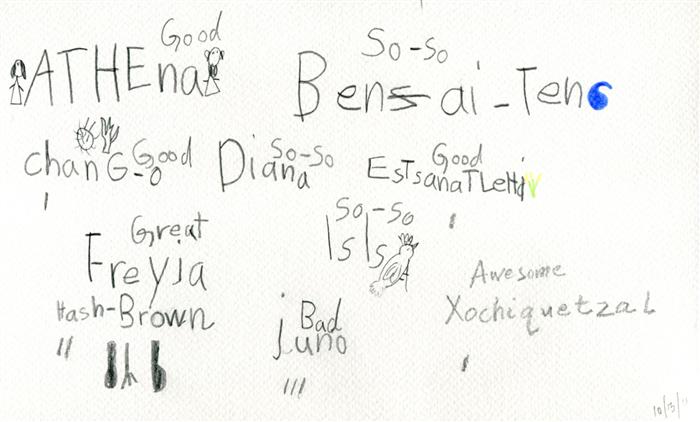Thursday: We had some rough moments, but we stayed out of disaster territory.
We started practice relatively late, at close to 7 pm. First, I read M the second chapter of Practiceopedia, about using “blinders” to help focus your practice time. (The author means it literally: he suggests laying on top of your score a piece of paper with windows only over thA e measures you want to practice. This doesn’t quite work for practicing the Suzuki repertoire.)
Next, I tried to get through the first two pages of Dan Fox’s Rhythm Bible at 72 bpm, which is faster than we’ve done before. M did pretty well on page 1, though she made a careless mistake in the third-to-last measure. When we moved to the second page, though, she was paying less attention, and clapped quarter notes for a half note. When I stopped her, she petulantly denied having made any mistake. She wanted to argue about it, so I decided to move on to something else.
I asked her to start with the Bach Tanz, playing it with a metronome. She started on autopilot, but then turned her mind to the piece and did a nice job. She did a few more repetitions, and her mind was wandering further and further from her playing, to the point where she started messing up the structure. We got into a little bit of a standoff when I told we would move on to something new as soon as she played with better concentration than the previous time. When I could tell she was playing on autopilot, I stopped her, and she didn’t like that. After a standoff (she sat holding her guitar; I told her she had to sit there until she played another repetition with good concentration), she played it through passably once. She didn’t actually show better concentration than the repetition I told her to improve on, but I didn’t think I was going to get what I asked for no matter how long I kept her at it, so we moved on.
Next she played the Meadow Minuet, also with the metronome. (At one point M suggested drawing a bunch of metronome people, and I suggested she draw “metrognomes.” She liked that (after I explained the silent “g”).) It was only okay; she stared into space most of the time she was playing.
Thinking that she might concentrate better on something new, I asked her to work on the first four bars of A Toye. The first time through, she picked her own pace. It was too fast, but she did better than I would have expected. I got her to slow down and play with the metronome, and playing all 4 bars seemed to be working — until it wasn’t. At some point, the second two bars became a train wreck. So then we focused just on those. After a few repetitions, it was time to be done so M could have a shower. M finished by playing the first 4 bars of A Toye for her mom, which was adorable.
Here’s our work on A Toye (all tracks add up to about 10 minutes):

